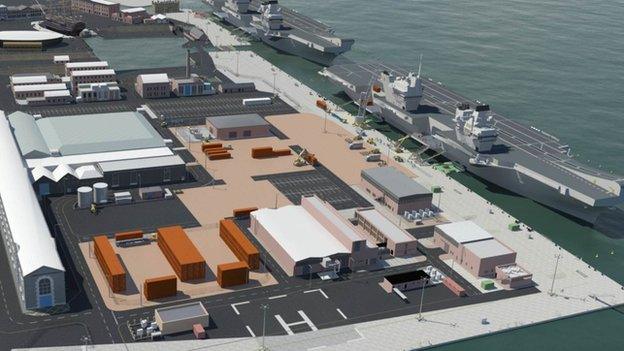More spending will see bigger Navy - defence secretary
- Published
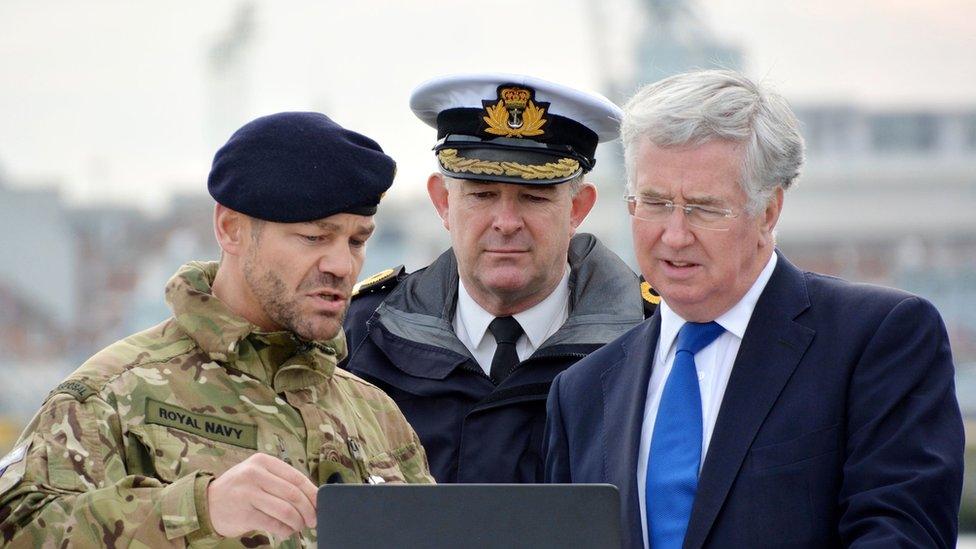
Michael Fallon (right) said Portsmouth will form the "flagship" of a bigger Royal Navy
Increased spending will result in a "bigger" Royal Navy, the defence secretary has said, as he announced a new £13.5m shipbuilding contract.
Sixty patrol boats will protect the UK's two new aircraft carriers which are due to arrive at Portsmouth Naval Base in 2017.
The first carrier, HMS Queen Elizabeth, is expected to be operational in 2020.
"We are going to see a bigger Royal Navy and the flagship... will be here in Portsmouth," Michael Fallon said.
The 60 Pacific 24 rigid-hulled inflatable boats will be built by BAE systems to "guard the carriers in the harbour and our new frigates and destroyers", Mr Fallon said.
He said they will also enhance security by providing a rapid response in rescue, anti-piracy and counter-narcotics missions in the area.
Increased spending
Mr Fallon said: "Through the defence review, defence spending is going to go up every April for the rest of this parliament.
He said as part of the larger investment, the government will also be able to provide the new aircraft carriers with sufficient fighter jets.
"We have said we will maintain a minimum fleet of 19 destroyers and frigates, but as the older frigates are retired we also hope to add a lighter frigate between the offshore patrol vessel and Type 26 and to build more of those as well."
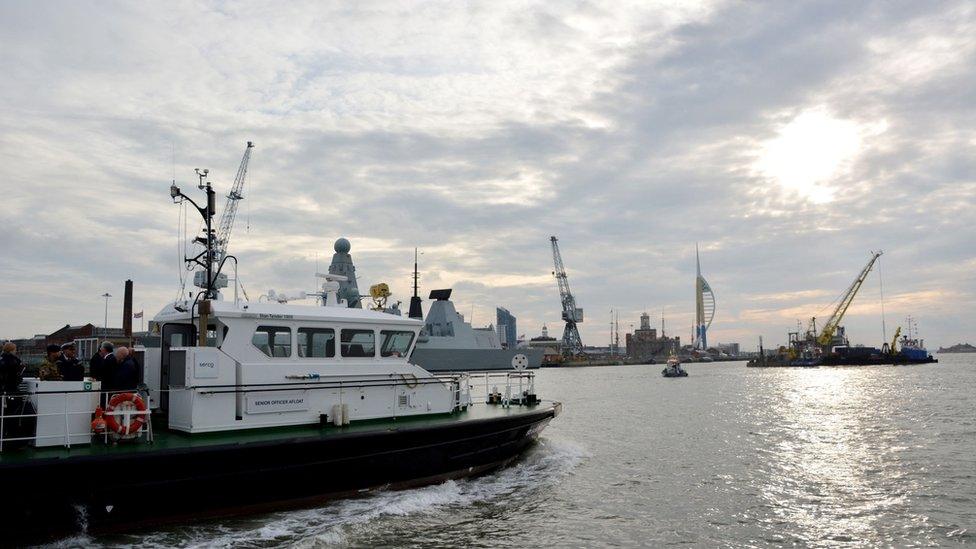
Mr Fallon was given a tour to see floating cranes dredging Portsmouth harbour
Taller than Nelson's Column
Mr Fallon's visit to Portsmouth Naval Base comes as work has begun to rebuild the jetty for the arrival of HMS Queen Elizabeth in 2017.
Floating cranes are also dredging Portsmouth harbour to prepare deeper channels for the aircraft carriers to sail from the base, which are the largest ships ever built for the Royal Navy.
"This is a huge financial investment in making sure the channel is wide enough, in enlarging the jetty here so they can take the carriers and in making sure the carriers are properly guarded," Mr Fallon said.
Taller than Nelson's Column and longer than Portsmouth's Spinnaker Tower laid on its side, the new carriers will displace 65,000 tonnes of water.
To make room for the carriers three million cubic metres of clay, sand and gravel will be removed from a two-mile stretch of Portsmouth Harbour covering an area the size of 200 football pitches.
- Published23 November 2015
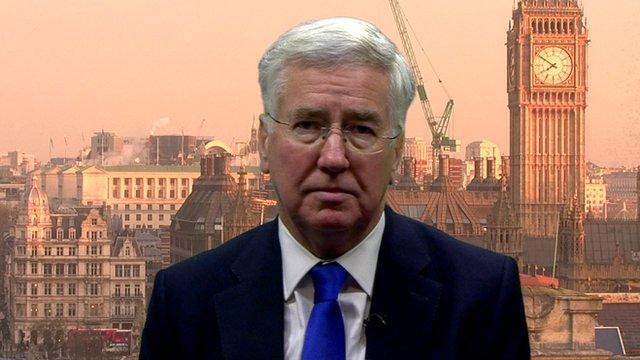
- Published23 November 2015
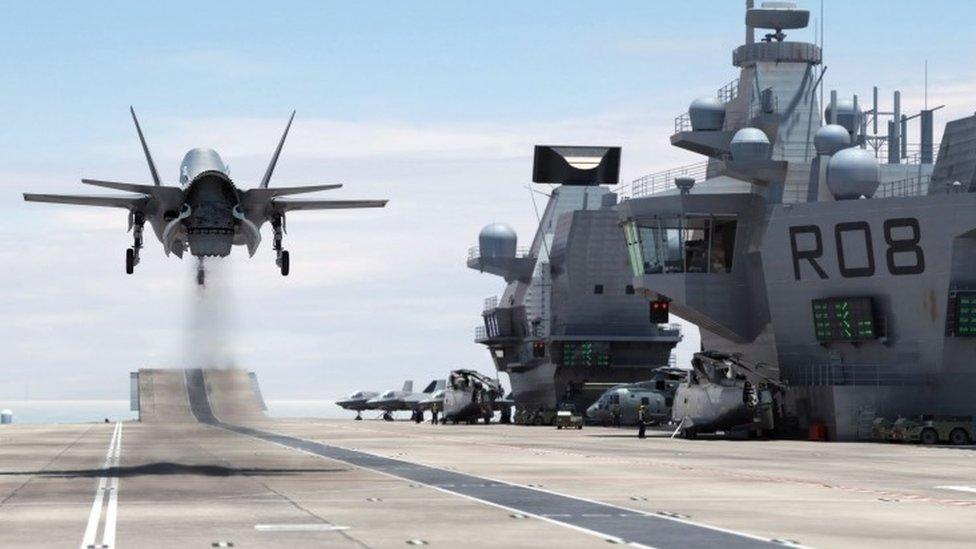
- Published28 July 2015
